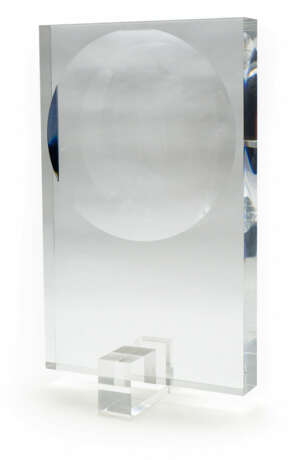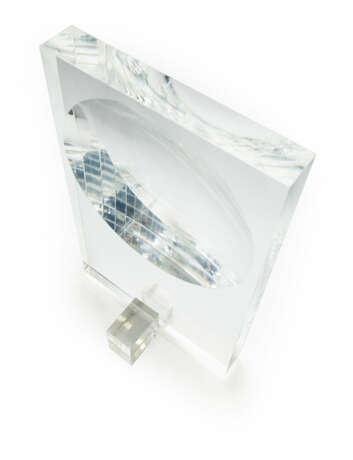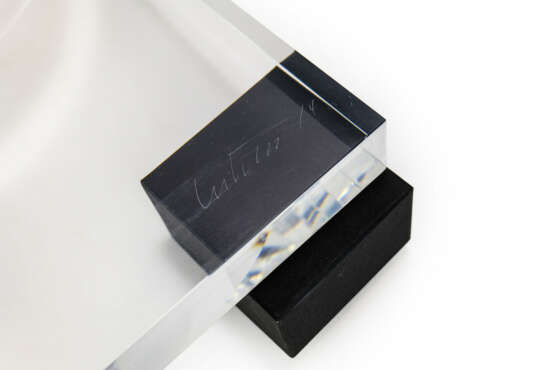ID 655625
Lot 86 | Stelen (Linsenobjekt)
Estimate value
€ 1 500
Stelen (Linsenobjekt), Plexiglas, mit Plexiglassockel, Maße (ohne Sockel) 40 cm x 25 cm x 4 cm, signiert, 84 datiert, partiell bestoßen, partiell oberflächliche Kratzer; Adolf Luther wurde 25. April 1912 in Uerdingen geboren und gilt als einer der Hauptvertreter der Kinetischen Kunst und der Op Art. Sein Werk zeichnet sich häufig durch die Verwendung von Linsen und Spiegeln aus, durch denen das Licht aus unterschiedlichen Winkeln hineinbricht, um spannende optische Effekte zu erzeugen. 1938 begann Luther ein Jurastudium in Köln, das jedoch durch seine Einberufung zum Wehrdienst und seiner anschließenden Gefangennahme durch die amerikanischen Truppen unterbrochen wurde. Nach seiner Rückkehr nach Deutschland setzte er seine Studien der Rechtswissenschaft fort und promovierte als 1942 als Dr. Jur. an der Universität Bonn. Neben seiner Arbeit als Richter entwickelte er ein Interesse an der Malerei und beschäftigte sich in seinen Werken zunehmend mit dem Phänomen des Lichts. Der Wechsel von der Farbfeldmalerei zur Bildhauerei im Jahr 1957 markierte einen Wendepunkt in seiner Karriere, von dort an widmete er sich ausschließlich seiner Kunst und schuf die ersten optischen, kinetischen Skulpturen, die in der Folgezeit den Schwerpunkt seines Schaffens bilden sollten. 1962 entstanden die ersten Lichtobjekte. Fortan nutzte er Licht als unmittelbaren Gestaltungsmoment im Raum. Im selben Jahr stellte er erstmalig zusammen mit der Künstlergruppe "ZERO" aus. Ab 1968 entstanden die ersten Hohlspiegelobjekte aus konkav und konvex gewölbten Spiegeln.
| Auction house category: | Modern and contemporary sculptures |
|---|
| Auction house category: | Modern and contemporary sculptures |
|---|
| Address of auction |
WETTMANN | Auktionshaus an der Ruhr Friedrichstraße 67-67a 45468 Mülheim an der Ruhr Germany | ||||||||||||||
|---|---|---|---|---|---|---|---|---|---|---|---|---|---|---|---|
| Preview |
| ||||||||||||||
| Phone | +49 (0)208 3059081 | ||||||||||||||
| Fax | +49 (0)208 4391735 | ||||||||||||||
| Buyer Premium | 30% | ||||||||||||||
| Conditions of purchase | Conditions of purchase | ||||||||||||||
| Business hours | Business hours
|






